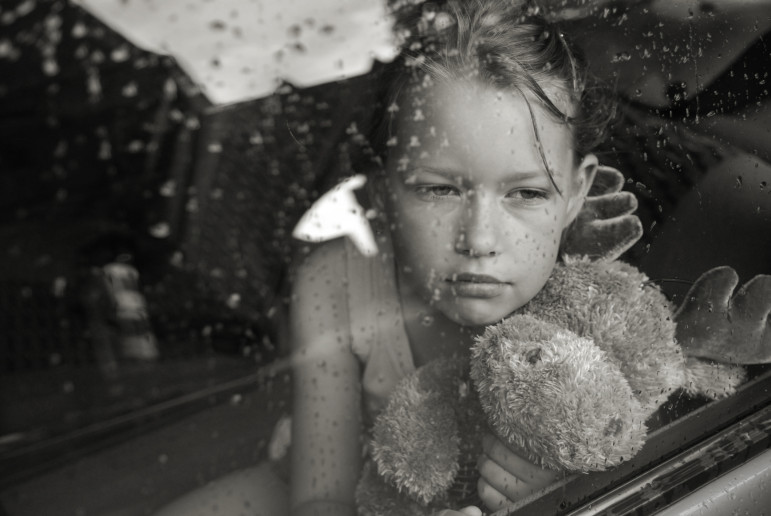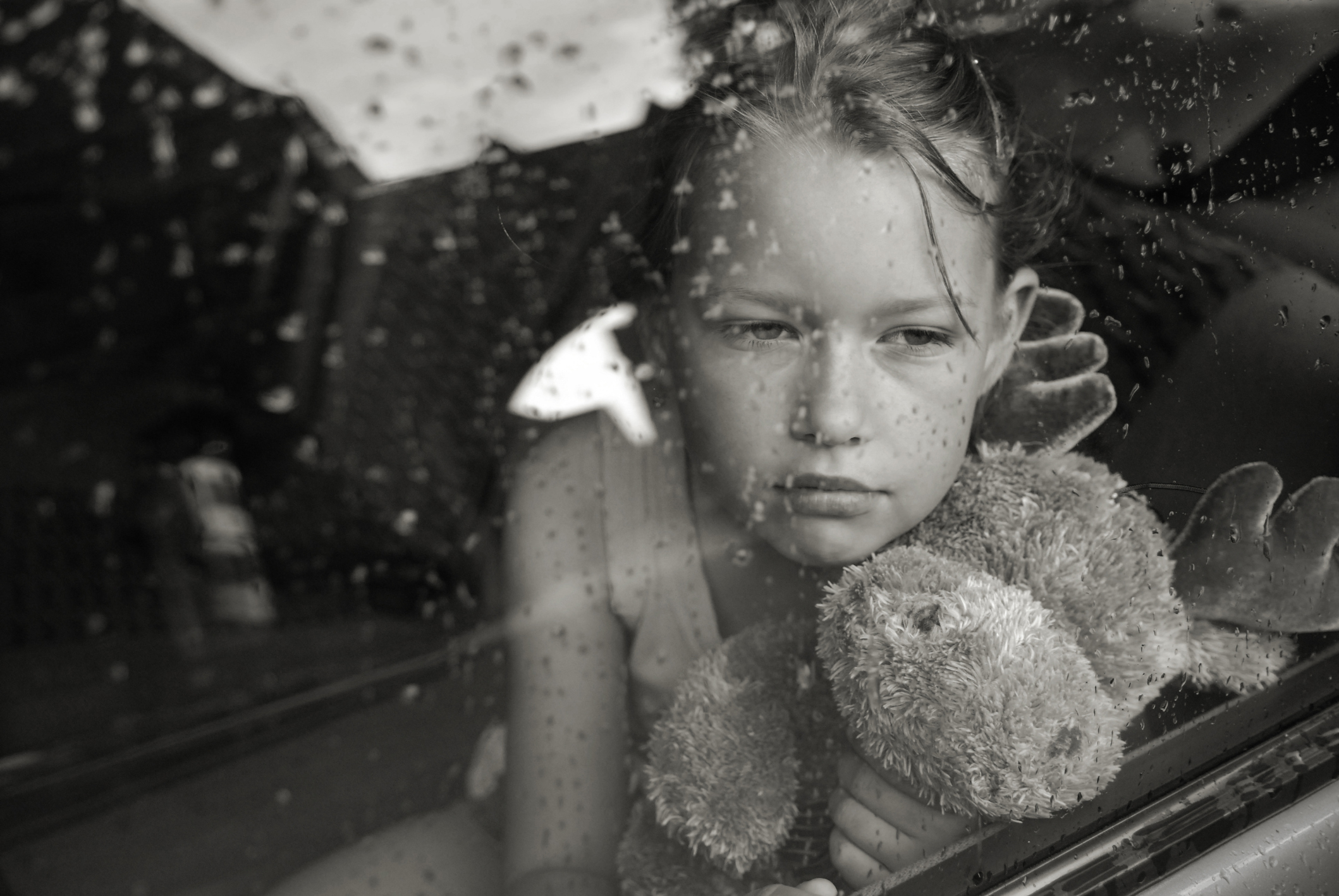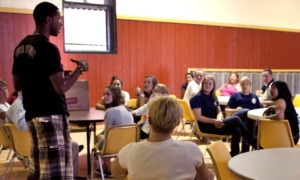
Four-year-old Aiden and his mother came to a Raleigh, N.C., Salvation Army Women & Children’s Shelter for the 30-day overnight program in October. They had no car and had shuttled between the homes of friends and family in Raleigh and Durham, N.C., but Aiden’s mother was determined to find the services her son needed.
Aiden, whose name is changed for his privacy, screamed and cried frequently, couldn’t focus and couldn’t sit still. He had language delays, couldn’t convey his needs and wants and couldn’t interact in age-appropriate ways.
Unfortunately, Aiden isn’t alone. A look inside the state’s homeless shelters quickly reveals a sobering fact — many residents are children. And a substantial number of those kids need mental health services they’re not getting.
Luckily for Aiden, a case manager for Community Action Targeting Children who are Homeless (CATCH) got involved, screening his developmental and social-emotional status. Aiden scored extremely low, completed additional testing and was diagnosed with autism. The case manager referred him to Child Find, an exceptional-needs children’s initiative, where he entered a half-day program.
“The Child Find office works closely with CATCH and understands the barriers unique to homelessness. It was extremely helpful to the mom, as the half-day program lets her seek employment and stable housing,” said Jennifer Tisdale, a Project CATCH coordinator who works with Aiden’s case manager.
“Without CATCH case management, it’s entirely possible this child would’ve never been identified and wouldn’t have received the services and placement in an appropriate setting beneficial to them both,” she said.
According to a new North Carolina State University (NCSU) and Salvation Army-funded study, 25 percent of homeless children — from infants to early-elementary school age — need mental health services to avoid developmental delays.
“In North Carolina, the fastest-growing homeless population is families, not individuals. It’s really important to see how this situation impacts them, especially young children,” said Jenna Armstrong, an NCSU doctoral student and study co-author. “We found there’s a significantly higher proportion of homeless children experiencing developmental and social-emotional delays than those who aren’t homeless.”
The situation in North Carolina
Nationally, there are 2.5 million homeless children. According to the 2014 National Center on Family Homelessness (NCFH) report, North Carolina falls in the bottom half, at 29th, in addressing this issue. Statewide, there are more than 55,000 homeless children, making North Carolina one of the 15 worst nationwide.
North Carolina has 650 emergency shelters and nearly 1,900 additional transitional or supportive housing spaces for homeless families. A newly formed interagency group on homelessness also exists. But few existing intervention programs focus on young children.
The NCFH report also revealed that North Carolina’s homeless children fall below national averages in academic performance. Only 22 and 29 percent of fourth-graders meet educational standards in reading and math, respectively. By eighth grade, those numbers decline to 19 and 23 percent.
What are the risks?
The NCSU/CATCH study evaluated 328 children, aged 2 months to 6 years, in 11 Wake County homeless shelters. They observed children and conducted 20-minute assessments with their parents. Most homeless children adapt and function well, but researchers found a quarter of the group suffer negative effects.
“Many homeless children have experienced prolonged poverty, exposure to family and neighborhood violence, separation from parents due to child protective-services involvement and inadequate parenting,” said Mary Haskett, an NCSU psychology professor and lead study author. “Residing in shelters adds the stress of living in a chaotic, crowded, often unsafe environment, and access to services is extremely limited for young children who are homeless.”
Based on CATCH-conducted assessments, homeless children have greater communication and language development delays — in fact, existing research shows 60 percent have significant communication delays. In this study, toddlers had particularly low communication development scores.
Learning to read is harder for children who don’t hit milestones on time, Haskett said, placing them at higher academic failure risk.
The team assessed physical development in babies, Armstrong said, by whether infants could sit up unsupported, which happens at about 4 to 7 months, and when they began babbling and talking not long afterwards. Investigators also examined social-emotional development by observing whether older children threw tantrums and how well they handled their emotions. By comparing a child’s behavior to large, national pediatric behavioral studies, the team concluded that many homeless children, such as Aiden, fell outside normal behavioral development ranges.
These delays could emerge at any age, Haskett said. Boys appeared to be at greater risk than girls for delayed social-emotional development, based on parental reports. Parents of 28 percent of at-risk boys and 21 percent of at-risk girls expressed concerns about their child’s social-emotional development.
But determining the extent of the difference and why it exists requires more research, she said.
What can be done?
Older school-age children receive some mental health services, Haskett said, through the federal McKinney-Vento Homeless Assistance Act. The law requires that schools have an education liaison to help students enroll in school and coordinate transportation for the student to attend. It also mandates other needed services, such as vocational or technical training, free or reduced school meals and before-and-after-school care.
But services for younger children are rare, she said.
“When these children arrive at a shelter, the priorities are housing and other basic needs of families,” Haskett said. “If children’s developmental and mental health needs are severe and obvious to shelter staff, a referral for appropriate services might be made. But if the delays are subtle, it’s unlikely. Untreated minor delays and mental health concerns tend to simmer and worsen over time.”
That’s why screening children, like Aiden, is vital, she said. Early identification can increase their access to existing beneficial programs, such as Early Head Start, a free child-development program for low-income families. The program teaches parents activities to bolster their children’s learning and offers day care center-based learning programs that help kids meet developmental and social-emotional milestones.
Other programs, such as the Nurse-Family Partnership, Incredible Years and the Triple P-Positive Parents Program, also give at-risk children support for improved growth and future academic performance, she said.
Through the Nurse-Family Partnership, maternal and child health nurses work with at-risk and low-income first-time parents, teaching them healthy habits and skills to support their infant’s early development. Incredible Years focuses on ensuring children’s healthy social and emotional development. Triple-P also strives to teach parents effective coping strategies to shepherd their child’s emotional development.
A Child’s Place, a school for homeless children in Charlotte, N.C., exemplifies early-intervention success. Ninety-two percent of the homeless children with whom they work read at grade level, compared to 48 percent nationally.
Having early-intervention service representatives participate in screening homeless children could make early assessments more effective, Haskett said. They could help determine whether a child is eligible for targeted programs.
“But the workforce must have competencies in young children’s mental health and development to serve this group,” she said. “Unfortunately, most communities lack mental health providers who can service children ages birth to 5.”
However, the NCFH recently made policy recommendations for promoting development and mental health functioning in homeless children. The hope, Armstrong said, is that this research will support those recommendations, as well as prompt legislators to advocate for expanding assessment screenings and create more support services.
Too often, Armstrong said, children like Aiden fly below the radar.
“They’re not paid attention to in shelters and they’re not noticeable in the school system,” she said. “We’re lucky to be at the forefront of this problem, to advocate for making these invisible children more visible to policymakers who have the power, through money, to remediate the problem.”
This story first appeared in North Carolina Health News.
































